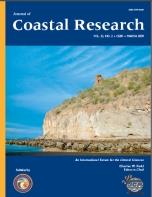There is major salt marsh loss in Galveston Bay and other estuarine environments. In Galveston Bay, the causes of marsh loss include wave action, subsidence, eustatic sea-level rise, and insufficient sediment supply. To assess the relative importance of these factors in marshes of West Galveston Bay, wave action, sediment supply, and sedimentation rates were studied. Analysis of the data indicated a significant gap between the historic sediment accretion rate of 0.20 cm y−1 and the relative sea-level rise (the rate of rise of the water depth due to the combined effects of eustatic rise and subsidence) of 0.65 cm y−1. Furthermore, in 94% of the eroding marshes, where 20% exceedance wave height was less than 0.17 m, the role of wave-induced erosion was relatively small. Thus, the major cause for salt marsh loss is insufficient sediment supply. These findings indicate that in the many eroding marshes in Galveston Bay, where wave action is not the major cause of marsh loss, marsh restoration efforts need to enhance sedimentation rather than wave protection.
How to translate text using browser tools
1 March 2009
Causes of Salt Marsh Erosion in Galveston Bay, Texas
Thomas M. Ravens,
Robert C. Thomas,
Kimberly A. Roberts,
Peter H. Santschi
ACCESS THE FULL ARTICLE

Journal of Coastal Research
Vol. 2009 • No. 252
March 2009
Vol. 2009 • No. 252
March 2009
Cs-137
Galveston Bay
Pb-210
sedimentation
subsidence
wetland loss




